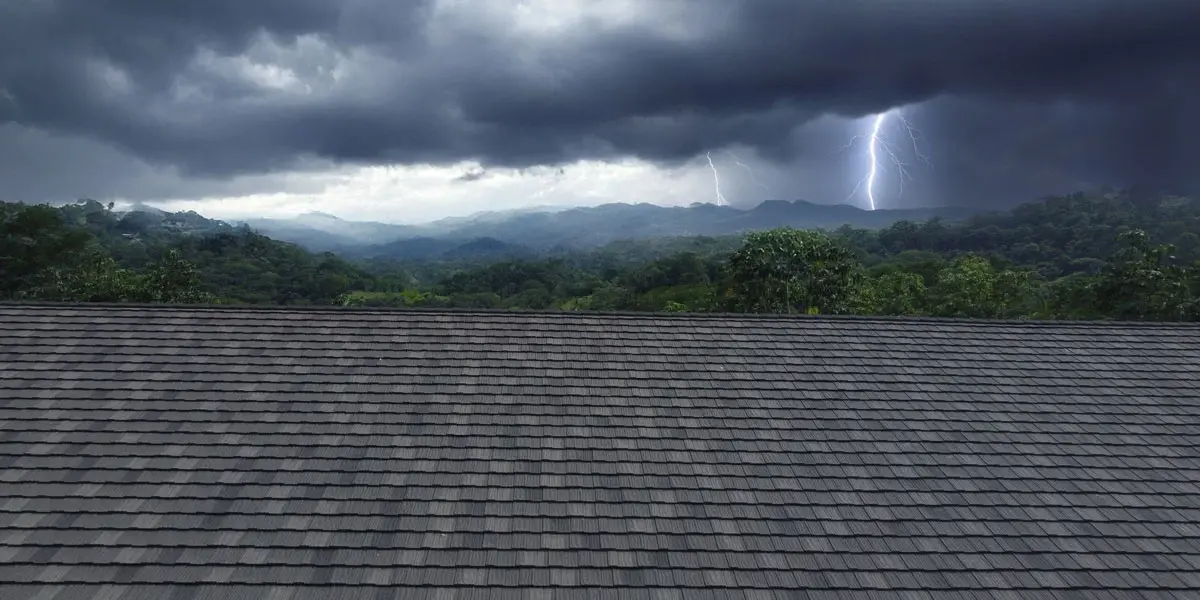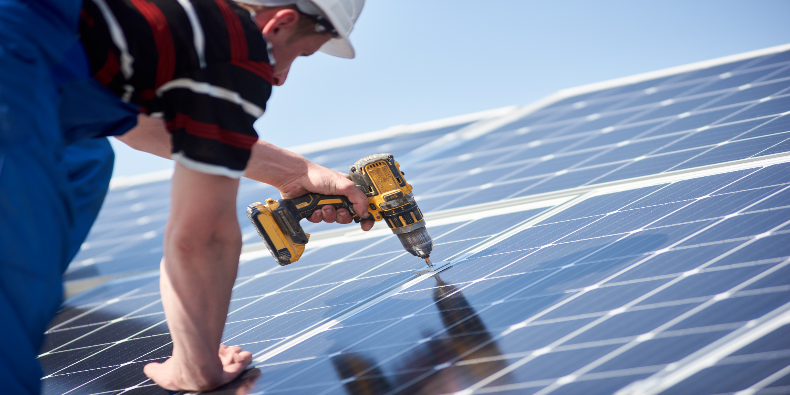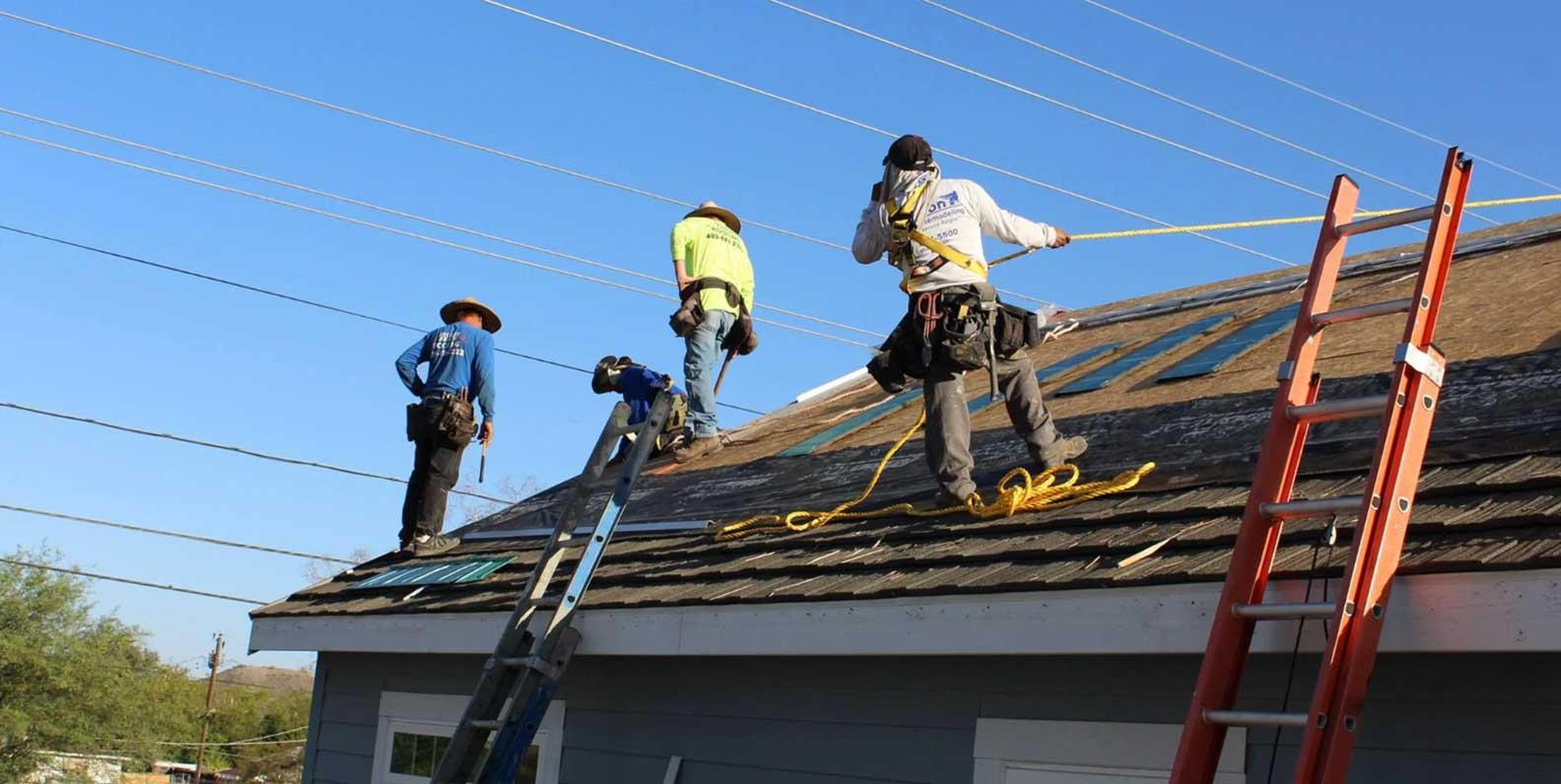No matter where you live in the U.S., storm season brings its share of threats. From hurricanes on the East Coast to tornadoes in the Midwest and hailstorms in the Northwest, severe weather is on the horizon. And your roof? It’s your home’s first line of defense.
Is it ready to handle what’s coming?
Taking the time to inspect your roof before storms hit can prevent costly damage, extend its lifespan, and keep your home safe and dry. Whether you’re facing high winds, heavy rain, or flying debris, a well-prepared roof is key.
Here are seven steps to get your roof ready for storm season.
1. Inspect Your Roof
Look for early signs of trouble and make necessary repairs before storms expose hidden vulnerabilities. If walking on your roof feels unsafe, hire a licensed roofing contractor. A professional inspection can provide peace of mind and help you avoid expensive damage down the line.
What to look for during a roof inspection:
- Sagging or structural instability
- Missing, loose, warped, or damaged shingles, tiles, or shakes
- Dents or chips from past hail damage
- Loose or deteriorating roofing materials
- Signs of water damage or leaks, both on the roof and inside the home (stained ceilings or soft spots)
- Mold, mildew, or lichens (signs of trapped moisture)
- Loose or deteriorating components, such as flashing, ridge vents, and seals around chimneys, dormers, skylights, or vents
2. Check Gutters and Downspouts
Your roof's drainage system plays a critical role in storm protection. Gutters and downspouts collect rainwater and direct it away from your home, helping prevent roof damage, water intrusion, and foundation issues.
Make sure your gutters are free of twigs, leaves, and trash that could clog the flow of water. After cleaning, test the water system to ensure water moves smoothly through the downspouts and drains away from the foundation. For added convenience, consider installing mesh gutter guards to keep debris out and reduce future maintenance.
Whether you handle the cleaning yourself or hire a professional, keeping the system in top shape is a simple step that offers protection during storm season.
3. Trim Trees and Overhanging Branches
Landscaping can pose a serious threat to your roof if not properly maintained. Tree limbs hanging over the roofline or loose branches can snap off during a storm and cause significant damage.
Before severe weather rolls in, trim back any branches that extend over your home, and create space between large plants and your roof.
Inspect trees on your property for weak or damaged limbs that could break loose. For taller trees or more complex landscaping, hire a professional arborist to ensure the work is done safely and effectively.
4. Look for Signs of Past Hail Damage
Hailstorms are among the most destructive weather events for roofs, leaving behind dents, pits, and cracked shingles that may compromise your roof’s integrity. If you’ve experienced a hailstorm in recent years, inspect your roof for visible signs of impact. This is especially important for materials like wood shakes or clay tiles, which are more prone to chipping, cracking, or breaking apart under hail pressure.
Even if damage isn’t immediately obvious, these vulnerabilities can allow water to seep in over time, leading to leaks and costly repairs.
Check your roof surface and gutters for accumulated granules, which can be a sign of hail impact. Also inspect the exterior of your home for chipped paint or damaged siding, which may indicate large hailstones.
5. Secure Rooftop Equipment
In a storm, anything loosely attached to your roof can become a dangerous projectile, threatening your home and neighboring properties.
Before storm season hits, make sure all rooftop equipment is securely fastened. This includes satellite dishes, antennas, weather vanes, internet hardware, and any exposed cables. Properly secured gear not only protects your roof but also helps prevent costly damage during extreme weather events.
6. Replace Your Roof
After your roof inspection, if you uncover more damage than expected, it may be worth replacing the roof altogether. With forecasters predicting a more intense 2025 Atlantic storm season, now is the time to ensure your home is protected. Tornadoes, high winds, and damaging rainstorms are already impacting many parts of the country, so don’t wait until your roof fails to take action.
When replacing your roof, consider DECRA stone-coated metal roofing, designed to perform under extreme conditions. DECRA is tested to meet the rigorous Miami-Dade County hurricane standards and is engineered to withstand wind uplift from storms with speeds up to 120 miles per hour. In addition to superior wind resistance, DECRA also offers built-in protection against rain and hail, making it a great choice for homeowners in storm-prone areas seeking long-lasting performance.
DECRA Metal Roofing: Designed for Storm Season
A DECRA metal roof offers unmatched strength, performance, and peace of mind when it matters most. It’s a long-term investment that not only protects your home, but also reduces the likelihood of costly storm damage and insurance claims.
Curious how a DECRA roof would look on your home?
Explore our gallery, request a sample, or use our online visualization tool to explore profile and color options that complement your property.







